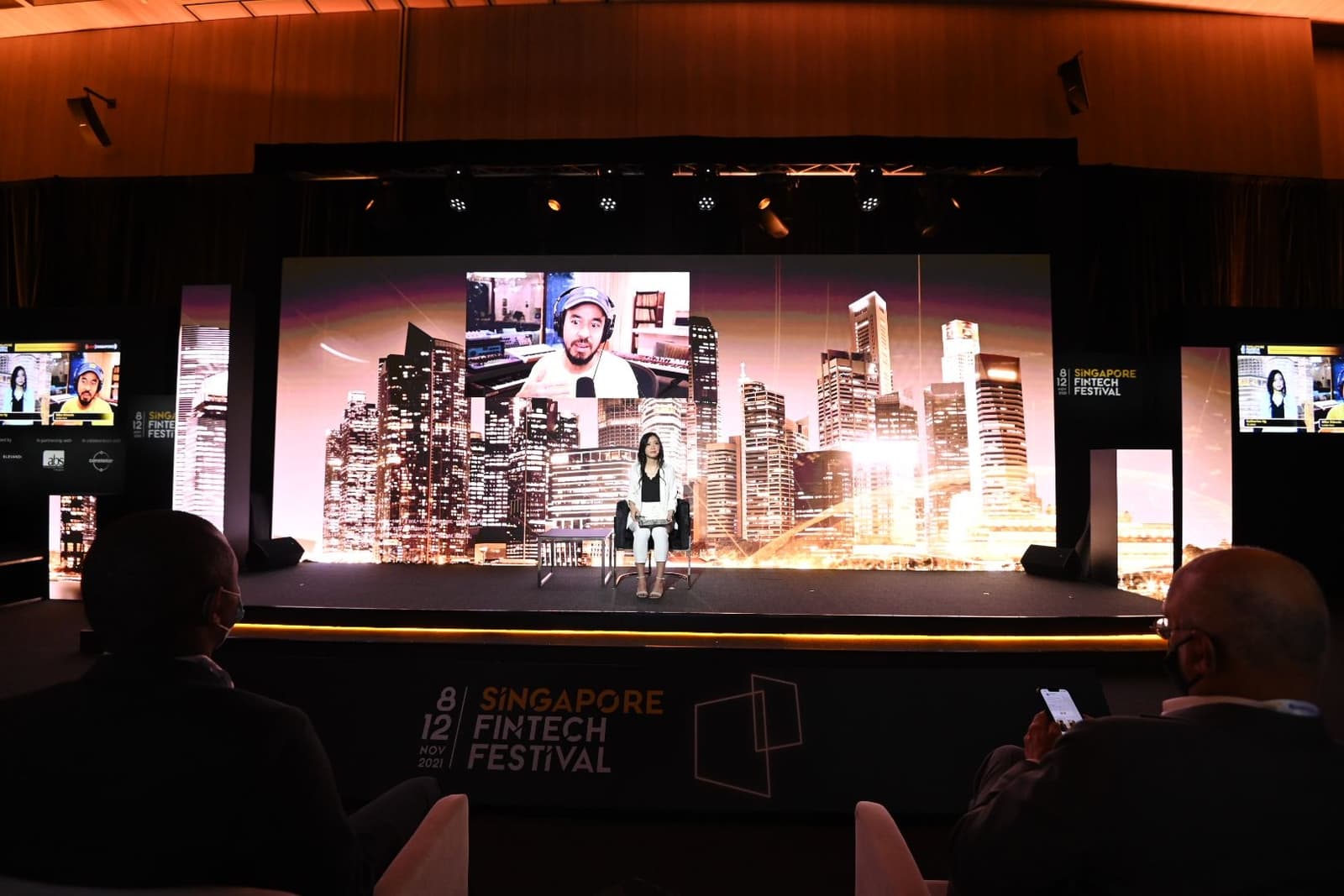IN
IN
JPN
EN
Join Our Communities


The metaverse. Web 3.0. Blockchain and NFTs. These are all new technologies Mike Shinoda, co-founder of rock band Linkin Park is interested in. But amongst all these developments, it’s the fact they will let people own their data, rather than giving it away to giants like Google, Facebook, and Instagram, that interests him most.
On Monday, Shinoda was sharing his views as part of the 2021 Singapore Fintech Festival (SFF). “The trend towards people wanting to own their data is one of the things driving people from Web 2.0 to Web 3.0,” he said.
His journey to making music and art on Tezos started, as it did for many people, with the pandemic. He said when everything shut down, he was in his studio making music and art and wanted to find a way to bring his core fanbase together.
“Everyone was stuck at home, and I saw people doing livestream concerts, and I felt like it wasn’t for me,” he said. “That wasn’t something that was going to last for the long term. You could do a few of those, but people would get kind of bored, or you’d run out of things to play or ways to play it.”
So, he began streaming on Twitch and would make something new every day. “Usually, it was music, but sometimes it was art,” he said.
The format of live streaming meant he got into conversations with fans and was able to collaborate with them. ONE FAN, WHO GOES BY THE NAME OF MOON (or ‘Mumu the Stan’), was posting 8-bit style art, and Shinoda, as well as others, loved her work.
Shinoda suggested she mint her art as an NFT and promised to buy the first one. “She made it on Tezos, and I did buy it,” he says.
“She’s now a leader in the whole Tezos community,” he added, “and she is teaching me and many others how to do different things in the community, and spreading the tools and education needed to get started on these things.”
According to Shinoda, NFTs will open ownership of digital goods. He used the example of kids creating skins for their video game characters, to exemplify the seeds of what transferable assets between platforms may look like. In the past, if a player left a game, they left their in-game possessions (in this case, their skins) behind. Those in-game assets couldn’t travel. By contrast, with blockchain-based goods, the player fully owns their in-game assets and can take it with them wherever they play. “When you buy it, you own it, it goes into your wallet, and you can take it with you,” he said.
This concept applies to any digital item, he said, meaning it could be a song, a piece of art, or even software. “Maybe the artist said, ‘yeah, I’m going to make one million copies of my new song, and they’re priced at a dollar’ and [for] anyone who owns one, it’s verified by the blockchain.”
Shinoda said digital goods verified by the blockchain open a door for creative people to be more creative and build communities around their art. He also said blockchain creates the opportunity for Decentralized Autonomous Organizations (DAOs) to emerge. This means a community can arise, all of whom can participate in the equity of something they are selling. “That’s something a DAO does really well,” he said. “It creates a community source for all this manpower that’s needed.”
“I’ve watched communities go from an idea to a full-blown blockchain video game in the course of a few weeks,” he continued. “I’ve never seen anything move so quickly or efficiently. We are seeing it work.”
He said his initial NFTs were minted on Ethereum, but he quickly realized its Proof of Work consensus mechanism was energy inefficient. “People say Ethereum 2.0 is on the way, and it will be Proof of Stake,” he said. “But then I realized there are other chains that are already Proof of Stake and are already energy efficient, Tezos being probably the most popular one.”
He then realized that he could experiment with these ‘greener’ and more affordable NFTs, offering something to fans that were relatively inexpensive or perhaps for free. Doing so would give fans the experience of buying and owning something that could increase in popularity and value. So, he put up a free NFT on the Tezos blockchain, and 100 people collected it.
“And the next thing they knew, it was worth USD $3000, and so they had this experience of value.”
Web 2.0 companies had taught people their creative work had no value, but Web 3.0 changes this, he said.
“Because, surprise, your creative material you’ve made is actually worth something to somebody. And if that is the view that’s shared by enough people, then the price will be reflected in that idea.”